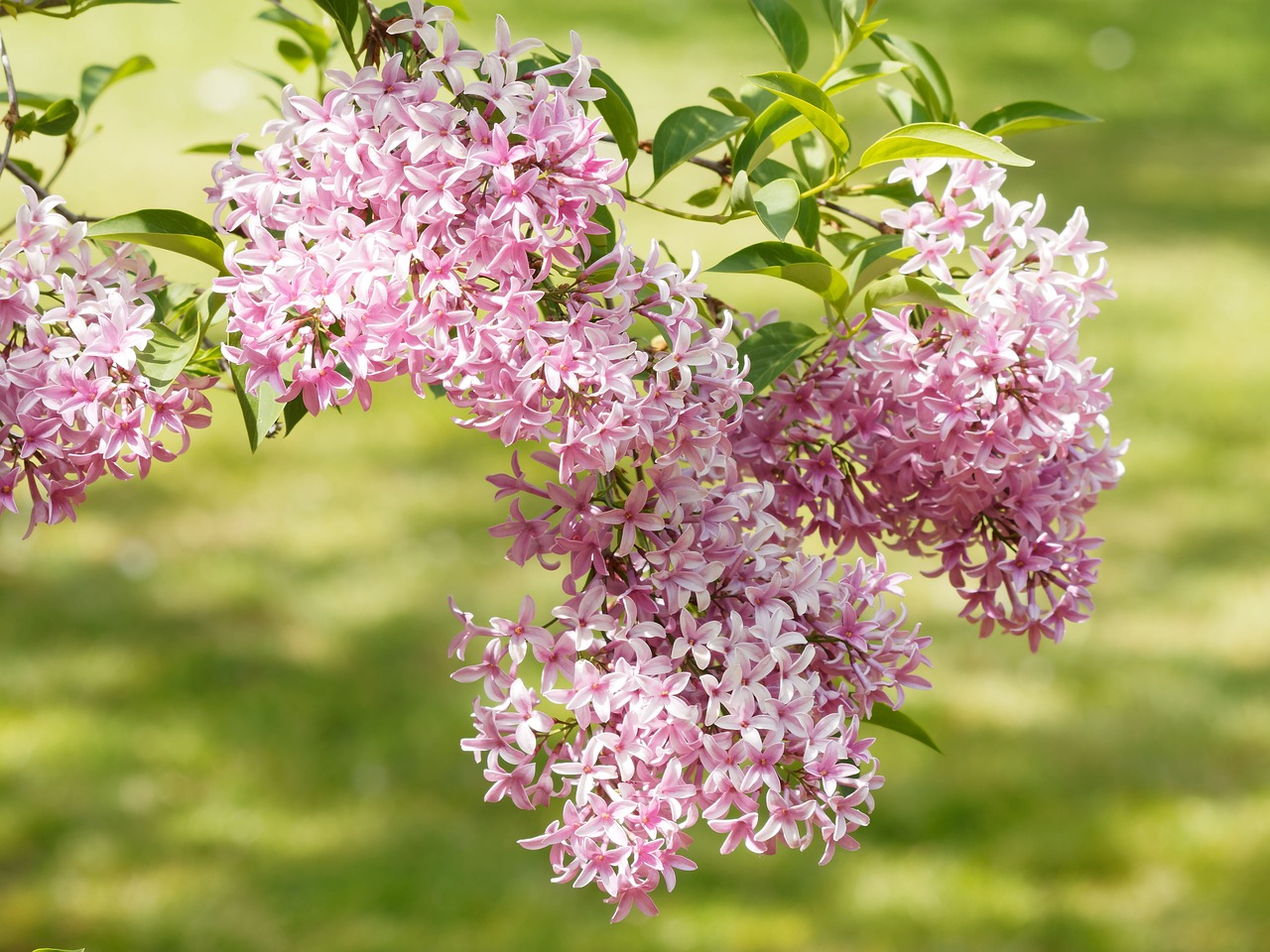Are you a fan of lilacs but don’t have enough space in your garden to grow them? Don’t worry, because you can still enjoy the beauty and fragrance of these popular flowering shrubs by growing them in containers. In this article, we will guide you through the steps and tips for successfully growing lilacs in containers, so you can bring their charm to even the smallest of spaces.
When it comes to growing lilacs in containers, choosing the right container is crucial. Consider factors such as size, material, and drainage to ensure optimal growth and health of the plants. A container that is at least 18 inches deep and wide is recommended to accommodate the root system of the lilacs. Additionally, ensure that the container has drainage holes to prevent waterlogging, which can lead to root rot.
Next, selecting the right lilac variety is important for successful container gardening. Look for compact and dwarf cultivars that are better suited for limited space and smaller containers. Some popular varieties for container growing include ‘Miss Kim’, ‘Palibin’, and ‘Bloomerang’. These varieties not only have beautiful blooms but also fit well in containers and require less pruning.
Preparing the container and soil properly is essential for the healthy growth of lilacs. Use a well-draining potting mix that is specifically formulated for container gardening. This will provide the necessary nutrients and moisture retention for the plants. Ensure that the container has adequate drainage by placing a layer of gravel or broken pottery at the bottom before adding the potting mix.
Now that you have the container and soil ready, it’s time to plant the lilacs. Follow a step-by-step guide to ensure successful establishment and growth. Proper spacing is important to allow air circulation and prevent overcrowding. Plant the lilacs at the same depth they were in their nursery containers and water thoroughly after planting.
Caring for container-grown lilacs involves regular watering, fertilizing, pruning, and protecting the plants during winter. Water the plants deeply whenever the top inch of soil feels dry. Fertilize them with a balanced slow-release fertilizer in early spring and again in early summer. Prune the plants after they finish blooming to maintain their shape and remove any dead or diseased branches. In winter, protect the containers from freezing temperatures by wrapping them with burlap or moving them to a sheltered area.
Just like their counterparts in the ground, lilacs in containers can face pests and diseases. Keep an eye out for common issues such as aphids, powdery mildew, and leaf spot. Identify these problems early and take appropriate measures to prevent and treat them. Regularly inspect the plants and remove any affected leaves or branches to keep the lilacs healthy and thriving.
When it’s time to harvest the lilacs, cut the flowers in the morning when they are fully open. Arrange them in a vase with fresh water and enjoy their beauty and fragrance in your home. You can also preserve the cut flowers by drying them upside down in a cool, dark place.
In conclusion, growing lilacs in containers is a great way to bring their beauty and fragrance to any space, no matter how small. By following the steps and tips mentioned above, you can successfully cultivate these popular flowering shrubs and create a stunning display in your garden or on your patio. So why wait? Start growing lilacs in containers and experience the joy they bring.
Choosing the Right Container
Choosing the Right Container
When it comes to growing lilacs in containers, selecting the right container is crucial for the optimal growth and health of your plants. There are a few factors to consider when choosing the container, such as size, material, and drainage.
Size: Lilacs have deep root systems, so it’s important to choose a container that is deep enough to accommodate their roots. A container with a depth of at least 18 inches is recommended to ensure adequate root growth.
Material: The material of the container can also affect the health of your lilacs. Clay or terracotta pots are popular choices as they provide good drainage and allow the roots to breathe. However, they can be heavy and prone to cracking in freezing temperatures. Alternatively, you can opt for lightweight plastic or fiberglass containers that are easier to move around and less likely to break.
Drainage: Proper drainage is essential for preventing waterlogged soil, which can lead to root rot. Make sure the container has drainage holes at the bottom to allow excess water to escape. You can also place a layer of gravel or broken pottery at the bottom of the container to improve drainage.
By taking into account these factors, you can choose the right container for growing lilacs in containers, ensuring optimal growth and health of your plants.
Selecting the Right Lilac Variety
When it comes to growing lilacs in containers, choosing the right variety is crucial. Not all lilacs are suitable for container gardening, especially if you have limited space and smaller containers. Luckily, there are compact and dwarf cultivars that are specifically bred for these conditions, allowing you to enjoy the beauty and fragrance of lilacs even in a confined space.
Compact lilac varieties, such as ‘Miss Kim’ and ‘Palibin’, are excellent choices for container gardening. These varieties typically reach a maximum height of 5 to 6 feet, making them ideal for smaller containers. They also have a more compact growth habit, which means they won’t outgrow their containers too quickly.
On the other hand, dwarf lilac varieties, like ‘Tiny Dancer’ and ‘Bloomerang’, are even more suitable for limited space. These lilacs stay small and compact, usually reaching a height of around 3 feet. Their smaller size makes them perfect for small containers and patio gardens.
When selecting the right lilac variety for container gardening, consider factors such as the size of the mature plant, the growth habit, and the container space available. By choosing compact and dwarf cultivars, you can ensure that your lilacs thrive in containers and bring joy to your garden.
Preparing the Container and Soil
Preparing the container and soil is an essential step in successfully growing lilacs in containers. By following the proper steps, you can ensure that your plants have the optimal conditions for healthy root growth and overall growth and development.
When it comes to selecting the right container, consider factors such as size, material, and drainage. Choose a container that is large enough to accommodate the lilac’s root system and allows for proper air circulation. Additionally, ensure that the container has drainage holes to prevent waterlogging, which can lead to root rot.
Next, it’s important to select the right potting mix for your container-grown lilacs. Look for a well-draining mix that provides good aeration and retains moisture without becoming waterlogged. You can also add organic matter, such as compost or peat moss, to improve the soil’s fertility and water-holding capacity.
Once you have the container and potting mix ready, it’s time to prepare the soil. Start by filling the container with the potting mix, leaving enough space at the top for watering. Gently firm the soil to remove any air pockets and create a level surface for planting.
Before planting your lilacs, make sure to water the potting mix thoroughly. This will help settle the soil and ensure that it is evenly moist. Avoid overwatering, as excessive moisture can lead to root rot.
By taking the time to properly prepare the container and soil, you are setting the stage for healthy root growth and successful growth of your container-grown lilacs.
Planting Lilacs in Containers
Follow a step-by-step guide on how to plant lilacs in containers, including tips on proper spacing, planting depth, and watering to ensure successful establishment and growth.
Planting lilacs in containers is a great way to enjoy these beautiful flowering shrubs even if you have limited garden space. By following a few simple steps, you can successfully grow lilacs in containers and create a stunning display of color and fragrance.
First, choose a container that is suitable for growing lilacs. Look for a pot that is large enough to accommodate the root system of the lilac plant, with ample drainage holes to prevent waterlogged soil. A container made of durable materials like terra cotta or plastic is ideal.
Next, prepare the container and soil for planting. Fill the container with a well-draining potting mix that is rich in organic matter. Make sure the soil is evenly moist but not soggy. Dig a hole in the center of the container that is deep enough to accommodate the root ball of the lilac plant.
Place the lilac plant in the hole, making sure that the top of the root ball is level with the surface of the soil. Backfill the hole with soil, gently firming it around the roots. Leave a small space between the soil surface and the rim of the container to allow for watering.
After planting, water the lilac thoroughly to settle the soil and remove any air pockets around the roots. Water regularly, keeping the soil evenly moist but not waterlogged. Avoid overwatering, as this can lead to root rot.
Proper spacing is important when planting lilacs in containers. Make sure to leave enough room between plants to allow for air circulation and prevent overcrowding. This will help prevent diseases and promote healthy growth.
Lastly, consider the planting depth of the lilac. The root ball should be planted at the same level as it was in its original container. Avoid planting too deep, as this can lead to suffocation of the roots.
By following these planting tips, you can ensure that your lilacs thrive in containers and provide you with years of beauty and fragrance.
Caring for Container-Grown Lilacs
When it comes to caring for container-grown lilacs, there are a few essential practices to keep in mind. By following these care tips, you can ensure that your lilacs thrive and produce vibrant blooms:
- Watering: Container-grown lilacs need regular watering to keep the soil moist but not waterlogged. Check the moisture level of the soil regularly and water when it feels dry to the touch.
- Fertilizing: Feed your container-grown lilacs with a balanced fertilizer formulated for flowering shrubs. Apply the fertilizer according to the package instructions, usually in early spring and again in late summer.
- Pruning: Pruning is important for maintaining the shape and health of your lilacs. Remove any dead or damaged branches, as well as any suckers that emerge from the base of the plant. Prune after the blooming season to avoid cutting off next year’s flower buds.
- Protecting from Winter: In colder climates, it’s crucial to protect your container-grown lilacs from harsh winter conditions. Move the containers to a sheltered location, such as a garage or basement, where the temperature remains above freezing. Alternatively, wrap the containers with insulation or burlap to provide some protection.
By following these care practices, you can ensure that your container-grown lilacs receive the necessary attention and care they need to thrive. With proper watering, fertilizing, pruning, and winter protection, you’ll be rewarded with vigorous growth and an abundance of beautiful blooms.
Managing Pests and Diseases
When growing lilacs in containers, it’s important to be aware of the common pests and diseases that can affect these beautiful flowering shrubs. By learning how to identify, prevent, and treat these issues, you can ensure the health and vitality of your container-grown lilacs.
Pests:
Some common pests that may target lilacs in containers include aphids, spider mites, and lilac borers. These pests can cause damage to the leaves, buds, and stems of the plants, potentially impacting their overall growth and flowering. Regular inspection of your lilacs is key to catching any pest infestations early.
To prevent and control pests, you can try natural remedies such as spraying the plants with a mixture of water and mild soap or using insecticidal soap. Additionally, attracting beneficial insects like ladybugs and lacewings can help keep pest populations in check.
Diseases:
Lilacs in containers can be susceptible to diseases like powdery mildew, leaf spot, and bacterial blight. These diseases can cause discoloration, wilting, and overall decline in the health of the plants. Proper care and maintenance can help prevent the occurrence of these diseases.
Ensure that your lilacs have good air circulation by spacing them adequately in the container. Avoid overhead watering, as this can promote the growth and spread of fungal diseases. If disease symptoms appear, remove and destroy the affected plant parts to prevent further spread.
Conclusion:
By staying vigilant and proactive in managing pests and diseases, you can maintain the health and vigor of your container-grown lilacs. Regular monitoring, timely intervention, and proper cultural practices will go a long way in ensuring that your lilacs thrive and continue to bring beauty and fragrance to your garden.
Harvesting and Enjoying Lilacs
Harvesting and Enjoying Lilacs
Once your container-grown lilacs have matured and are in full bloom, it’s time to harvest and enjoy their exquisite beauty and fragrance. Follow these best practices to ensure a successful harvest:
- Choose the right time: Wait until the lilac flowers are fully open and have a strong fragrance before harvesting. This is when they are at their peak beauty and fragrance.
- Use sharp pruners: When cutting the flowers, use sharp and clean pruners to make clean cuts and avoid damaging the plant.
- Cut at an angle: Cut the lilac stems at a 45-degree angle to maximize water uptake and prolong the vase life of the cut flowers.
- Remove excess foliage: Strip off any excess foliage from the stems, leaving only a few leaves at the top. This helps the flowers to take up water more efficiently.
Once you have harvested your lilacs, it’s time to arrange them and fully enjoy their beauty and fragrance:
- Choose a suitable vase: Select a vase that is tall enough to support the length of the lilac stems and has a wide enough opening to allow for easy arrangement.
- Trim the stems: Trim the bottom of the lilac stems again at a 45-degree angle before placing them in the vase. This helps with water absorption.
- Arrange with care: Arrange the lilac stems in the vase, allowing them to naturally arch and create a beautiful display. You can also mix them with other complementary flowers for a stunning bouquet.
- Change the water regularly: To prolong the life of your cut lilacs, change the water in the vase every couple of days and trim the stems slightly each time.
- Enjoy the fragrance: Place your lilac arrangement in a prominent location where you can fully enjoy the intoxicating fragrance that these flowers emit.
By following these harvesting and arranging tips, you can fully enjoy the beauty and fragrance of your container-grown lilacs and create stunning floral displays that will bring joy to your home.
Frequently Asked Questions
- Can I grow lilacs in containers?
Yes, you can successfully grow lilacs in containers. By following the proper steps and tips, you can enjoy the beauty and fragrance of these popular flowering shrubs even if you have limited garden space.
- What type of container is best for growing lilacs?
When choosing a container for growing lilacs, consider factors such as size, material, and drainage. It’s best to use a large container made of a durable material like plastic or ceramic, with adequate drainage holes to ensure optimal growth and health of the plants.
- Are there specific lilac varieties suitable for container gardening?
Yes, there are lilac varieties that are better suited for container gardening. Look for compact and dwarf cultivars that are specifically bred for limited space and smaller containers. These varieties will thrive and bloom well in containers.
- How do I prepare the container and soil for planting lilacs?
To prepare the container and soil for planting lilacs, select a high-quality potting mix that is well-draining. Ensure the container has proper drainage holes and fill it with the potting mix. This will provide the right environment for healthy root growth and overall plant health.
- What are the steps for planting lilacs in containers?
Follow these steps for planting lilacs in containers: 1) Place the container in a suitable location with full sun exposure. 2) Dig a hole in the potting mix that is slightly larger than the root ball of the lilac plant. 3) Gently place the lilac plant in the hole and backfill with potting mix. 4) Firmly press the soil around the plant to secure it. 5) Water thoroughly after planting.
- How do I care for container-grown lilacs?
Proper care practices for container-grown lilacs include regular watering, fertilizing with a balanced fertilizer, pruning to maintain shape and remove dead wood, and protecting the plants during winter by insulating the container or moving it to a sheltered location.
- What are common pests and diseases that can affect lilacs in containers?
Common pests and diseases that can affect lilacs in containers include aphids, powdery mildew, and lilac borers. Regularly inspect your plants for signs of infestation or disease, and take appropriate measures such as using insecticidal soap or fungicides to prevent and treat these issues.
- When and how should I harvest lilacs from container-grown plants?
Harvest lilacs when the flower buds have fully opened but before they start to fade. Cut the stems at an angle and place them immediately in a bucket of water. To enjoy their beauty and fragrance for longer, remove any leaves that will be submerged in water and change the water daily.


